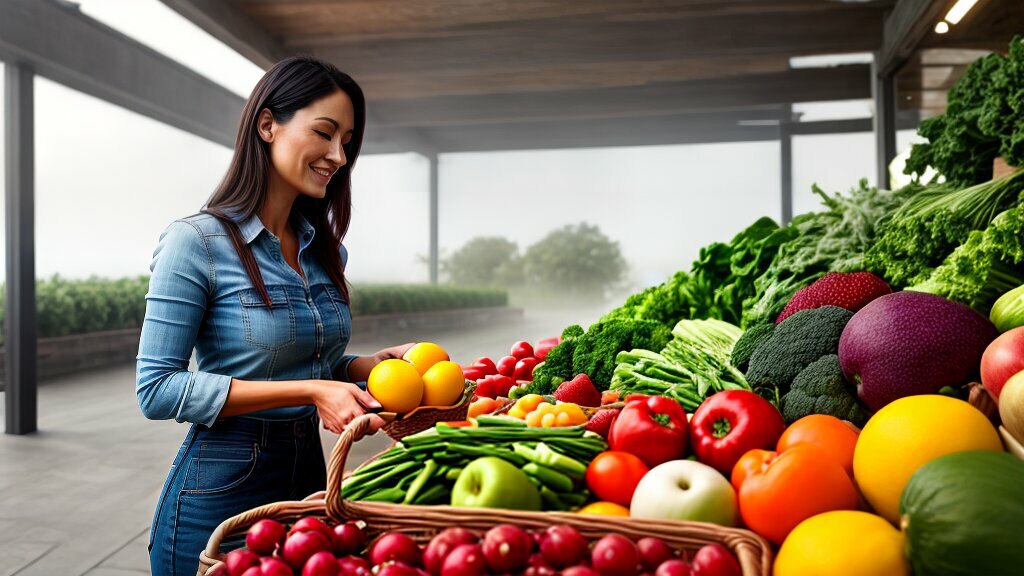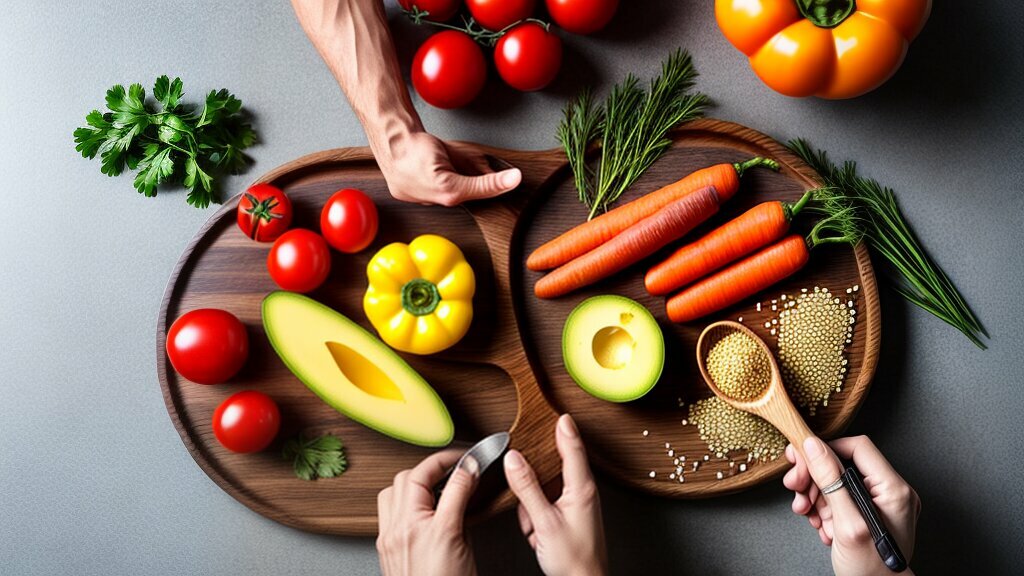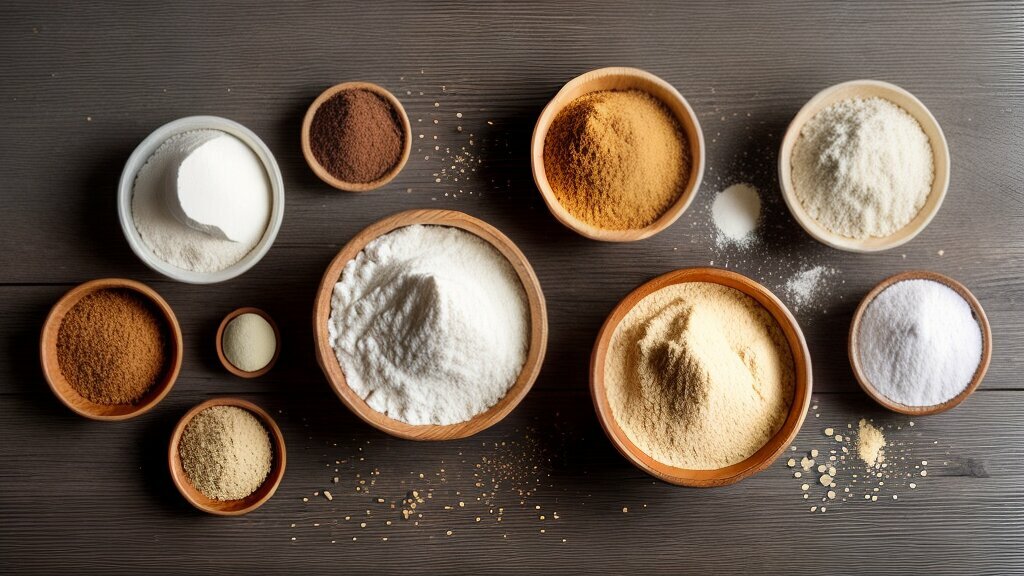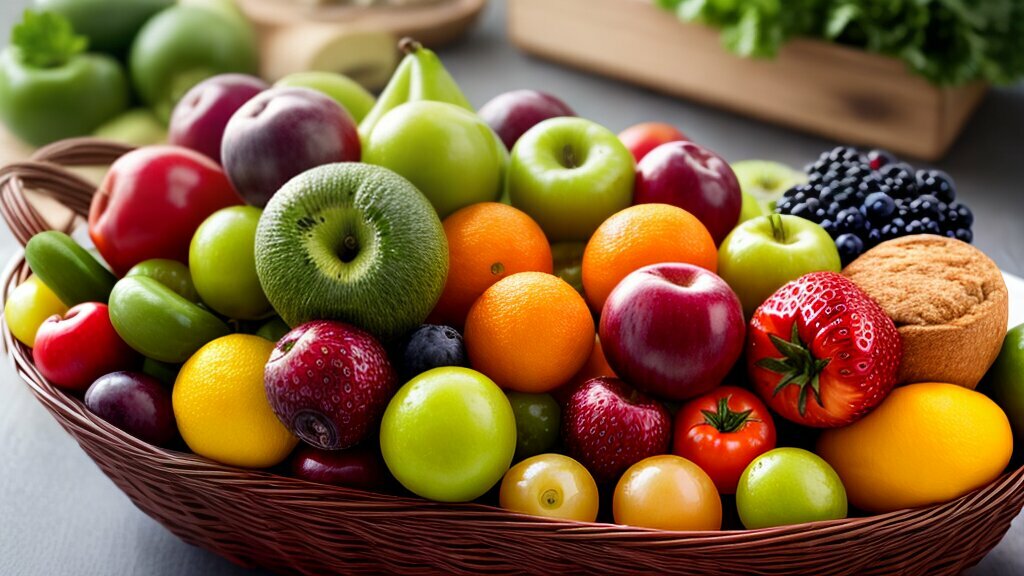If you are someone who suffers from gluten intolerance or celiac disease, following a gluten-free diet is essential to maintain good health. Gluten is a protein found in wheat, barley, and rye, and consuming it can cause severe digestive problems and other health issues in those with gluten intolerance or celiac disease.
Going gluten-free can seem like a daunting task, but it doesn’t have to be. By making some simple changes to your eating habits and lifestyle, you can enjoy a healthy and fulfilling gluten-free life. In this article, we will provide you with some useful tips and strategies to help you successfully adopt a gluten-free diet and lifestyle.
Key Takeaways:
- Following a gluten-free diet is crucial for individuals with gluten intolerance or celiac disease.
- A gluten-free lifestyle can improve digestive health and overall well-being.
- With the right knowledge and tools, planning and cooking gluten-free meals can be both easy and delicious.
- There are many options for finding gluten-free products in Australia.
Understanding Gluten Intolerance and Celiac Disease
If you experience discomfort after consuming gluten-containing food, it may indicate gluten intolerance. People with celiac disease also experience an immune reaction when consuming gluten. While the symptoms of these two conditions overlap, celiac disease is a more severe form of gluten intolerance.
Gluten is a protein found in wheat, barley, and rye. When people with gluten intolerance or celiac disease consume gluten, it triggers an immune response that can cause damage to the small intestine, leading to a range of symptoms such as bloating, abdominal pain, diarrhea, and constipation.
In Australia, approximately 1 in 70 people have celiac disease, and even more have gluten intolerance. If you experience persistent digestive symptoms such as those mentioned above, it is essential to consult a healthcare provider.
Diagnosis of Gluten Intolerance and Celiac Disease
The only way to confirm gluten intolerance or celiac disease is through medical testing. Blood tests can detect the presence of specific antibodies that indicate celiac disease, while an endoscopy and biopsy may be necessary to confirm the diagnosis.
If you suspect that you have gluten intolerance or celiac disease, it is crucial to consult a healthcare professional before making any dietary changes.

“If you experience persistent digestive symptoms such as bloating, abdominal pain, diarrhea, and constipation, it is essential to consult a healthcare provider.”
Benefits of a Gluten-Free Diet
Following a gluten-free diet has numerous health benefits, particularly for individuals with gluten intolerance or celiac disease. By eliminating gluten from your diet, you will find relief from uncomfortable symptoms such as bloating, abdominal pain, and diarrhea.
Not only can a gluten-free diet alleviate symptoms, it can also improve your digestive health overall. This is because gluten can cause inflammation in the gut, leading to long-term damage and increased risk of certain diseases.
Additionally, a gluten-free lifestyle can contribute to better overall well-being, including increased energy levels and improved mental clarity. By choosing whole, unprocessed foods as the basis of your diet, you will also be consuming more essential nutrients.
It is important to note that a gluten-free diet is not a guarantee of weight loss, as many gluten-free products contain high amounts of sugar and fat. Therefore, it is essential to focus on nutrient-dense foods and avoid processed options.
Benefits of a Gluten-Free Diet:
- Relief from discomfort caused by gluten intolerance or celiac disease
- Improved digestive health and reduced inflammation
- Better overall well-being, including increased energy levels
- Consumption of more essential nutrients, particularly when choosing whole, unprocessed foods
By embracing a gluten-free lifestyle, you can experience a range of health benefits that will improve your quality of life. Next, we will provide tips on how to successfully plan and prepare delicious gluten-free meals.

Tips for a Successful Gluten-Free Meal Planning
Switching to a gluten-free diet can seem daunting, but with proper planning and preparation, you can easily create delicious and nutritious gluten-free meals. Here are some tips to help you with gluten-free meal planning:
| Tip | Description |
|---|---|
| Plan your meals in advance | Take some time to plan your meals for the week ahead. This will help you save time and money, and ensure you have all the ingredients you need for your gluten-free meals. |
| Shop for gluten-free alternatives | Look for gluten-free versions of your favorite foods, like bread, pasta, and flour. Many grocery stores now have a dedicated gluten-free section, making it easier to find what you need. |
| Read food labels | Learn to read food labels and look for any ingredients that contain gluten, like wheat, barley, and rye. You can also look for products that are certified gluten-free. |
| Consider meal prepping | Meal prepping can save you time during the week and ensure that you always have a healthy gluten-free meal on hand. Prepare large batches of your favorite gluten-free dishes and store them in containers for easy reheating. |
| Experiment with new recipes | There are plenty of delicious gluten-free recipes out there, so don’t be afraid to try something new. Look for recipes online or in gluten-free cookbooks, and experiment with different ingredients to create your own unique dishes. |
By following these gluten-free meal planning tips, you can enjoy a wide variety of delicious and healthy gluten-free meals.

Gluten-Free Cooking and Recipes
If you’ve recently transitioned to a gluten-free lifestyle, cooking and meal planning may seem daunting at first. However, with practice and patience, you can discover a whole new world of delicious and nutritious gluten-free meals. Here are some tips to get you started:
Staple Ingredients
Stock up on gluten-free staple ingredients such as rice, quinoa, gluten-free flour blends, corn tortillas, and gluten-free pasta. These versatile ingredients can be used in a variety of dishes and will form the basis of many gluten-free meals.
| Gluten-Free Flour Blends | Gluten-Free Pasta |
|---|---|
 |
 |
Cooking Techniques
Experiment with different cooking techniques to add variety to your meals. Baking, grilling, stir-frying, and slow-cooking are all great options for gluten-free cooking. When coating foods with breadcrumbs, use gluten-free breadcrumbs or crushed rice crackers instead of traditional breadcrumbs.
“By using gluten-free flour blends, you can achieve the same texture and flavor in baked goods as with traditional wheat flour.”
Recipe Suggestions
Need some recipe inspiration? Try starting with these tasty gluten-free options:
- Gluten-free pizza made with a cauliflower crust
- Quinoa and black bean stuffed bell peppers
- Gluten-free chicken parmesan with gluten-free breadcrumbs
- Slow-cooker gluten-free beef stew
- Gluten-free vegetarian lasagna with rice noodles
Remember to always read labels and check for gluten-free certifications when purchasing packaged ingredients. With a little creativity and experimentation, you’ll soon discover that gluten-free cooking can be just as delicious and satisfying as traditional cooking.
Tips for Finding Gluten-Free Products in Australia
If you are following a gluten-free lifestyle, finding suitable products can be a challenge. Fortunately, there are many places in Australia where you can discover a wide range of gluten-free options. Whether you are grocery shopping, dining out, or looking for specialty stores, this section will guide you on where to find gluten-free products in Australia.
Grocery Stores
Most major grocery stores in Australia have a dedicated gluten-free section that stocks a wide range of products, including bread, pasta, snacks, and baking essentials. Some of the top grocery stores to find gluten-free products include Coles, Woolworths, and Aldi.
When shopping for gluten-free products, it is essential to read the labels carefully to ensure they do not contain any hidden gluten. Look for products that have a gluten-free certification, such as the Coeliac Australia endorsement, to ensure the product is safe to consume.
Online Retailers
If you are unable to find gluten-free products at your local grocery store, you can turn to online retailers. Online shopping offers a broad range of gluten-free products that you may not find in your local store, and it is convenient, especially if you have a busy schedule.
Some popular online retailers for gluten-free products in Australia include Gluten Free Grocer, Aussie Health Products, and Naturally Free Food. The products are delivered straight to your doorstep, ensuring you have a constant supply of gluten-free options.
Specialty Stores
Specialty stores are excellent places to find unique and hard-to-find gluten-free products. These stores only stock gluten-free items, making it easier to shop without having to read labels constantly.
You can find specialty stores in most major cities in Australia, and some of the popular ones include Gluten Free Me, The Gluten Free Co, and Tessa’s Bakery. These stores offer a range of gluten-free products, including bread, pastry, desserts, and even beer and wine options.

Embrace a gluten-free lifestyle and enjoy the many benefits it offers. With these tips, you can easily find gluten-free products in Australia and discover new and delicious gluten-free options to add to your diet.
Conclusion
In conclusion, following a gluten-free diet is essential for individuals with gluten intolerance or celiac disease. It is important to understand the difference between the two conditions and their impact on your health. Benefits of a gluten-free lifestyle include improved digestive health, symptom relief, and overall well-being. To successfully plan gluten-free meals, it is necessary to learn how to read labels, find alternative ingredients, and meal prep.
Gluten-free cooking can be fulfilling and delicious. With a variety of recipes available, it is easy to discover new and tasty dishes. Furthermore, finding gluten-free products in Australia is easier than ever with the availability of local grocery stores, online retailers, and specialty shops. Remember to always check for gluten-free certifications when purchasing packaged products.
By embracing a gluten-free lifestyle, you can improve your health and well-being. Whether you have gluten intolerance or celiac disease, it is important to prioritize your dietary needs. With the tips and knowledge provided in this article, you can confidently navigate the world of gluten-free living and enjoy a healthy, fulfilling life.
FAQ
Q: What is a gluten-free diet?
A: A gluten-free diet is a dietary approach that excludes the protein gluten. Gluten is found in wheat, barley, rye, and their derivatives. This type of diet is essential for individuals with gluten intolerance or celiac disease.
Q: What is gluten intolerance?
A: Gluten intolerance, also known as non-celiac gluten sensitivity, is a condition where consuming gluten causes adverse symptoms, similar to those with celiac disease. However, it does not result in the same damage to the small intestine as celiac disease.
Q: What is celiac disease?
A: Celiac disease is an autoimmune disorder in which the ingestion of gluten leads to damage in the small intestine. It can cause symptoms such as abdominal pain, bloating, and diarrhea. If left untreated, it can lead to malnutrition and other serious complications.
Q: What are the benefits of following a gluten-free diet?
A: Following a gluten-free diet can help improve digestive health, alleviate symptoms related to gluten intolerance or celiac disease, and contribute to overall well-being. It can also help individuals maintain a healthy weight and reduce the risk of certain diseases.
Q: How can I plan gluten-free meals successfully?
A: Planning gluten-free meals involves careful grocery shopping, label reading, and finding gluten-free alternatives for favorite dishes. It’s important to choose fresh and whole foods, such as fruits, vegetables, lean proteins, and gluten-free grains. Meal prepping and experimenting with gluten-free recipes can also make meal planning easier.
Q: Are there any delicious gluten-free recipes I can try?
A: Absolutely! There are plenty of delicious gluten-free recipes available. From gluten-free pancakes and quinoa salads to gluten-free pasta dishes and flourless desserts, the options are endless. A quick online search or browsing through gluten-free cookbooks can help you discover new and tasty dishes to enjoy.
Q: Where can I find gluten-free products in Australia?
A: You can find gluten-free products in local grocery stores, online retailers, and specialty shops. Many supermarkets have dedicated gluten-free sections, and online platforms offer a wide range of gluten-free options. It’s important to read labels and look for gluten-free certifications to ensure the products are safe for consumption.
